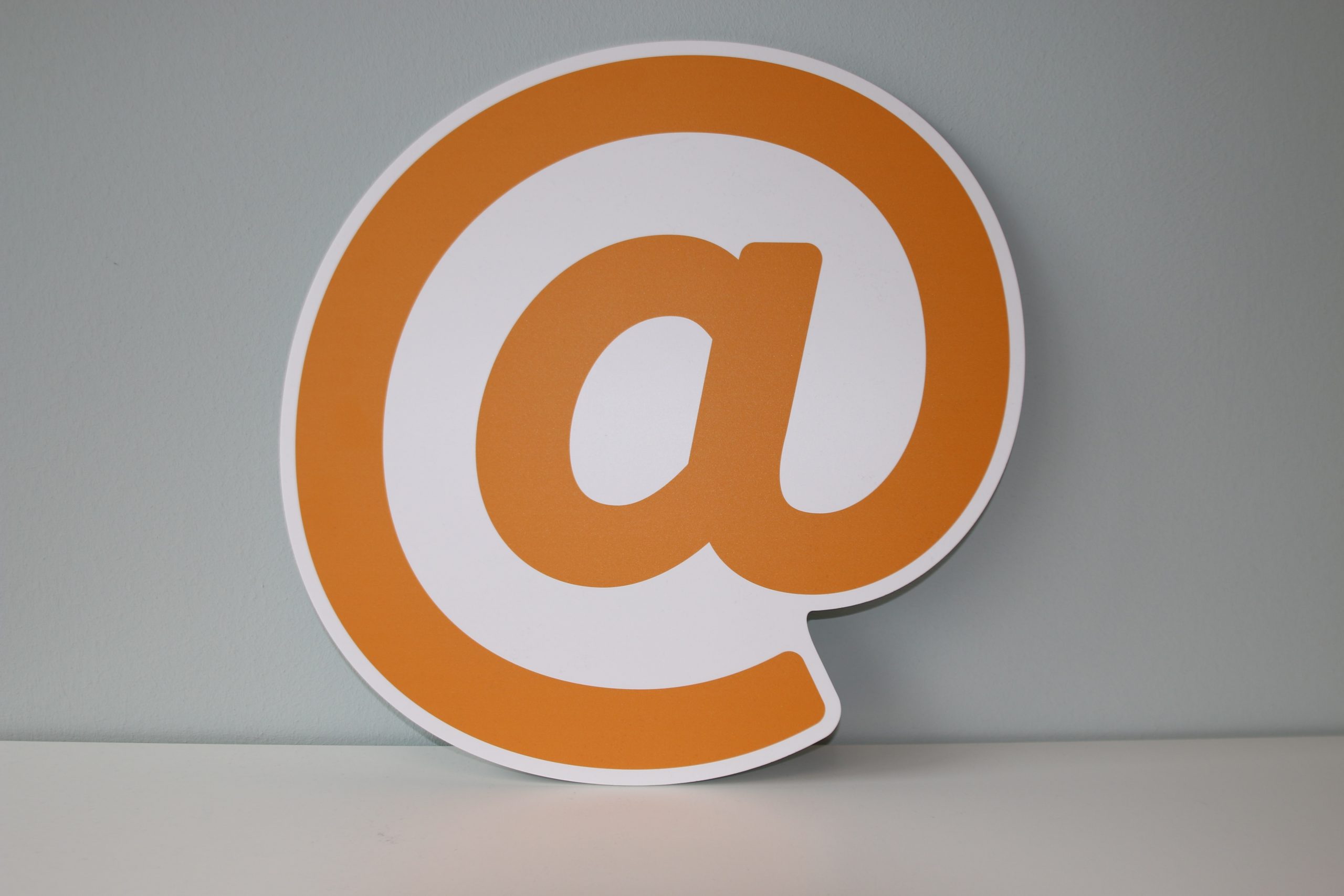Is email “over”?
People used to love getting email—it was even exciting to receive something in your inbox! But these days, many of us now receive too many emails, and it seems that people may have fallen out of love with email.
However, according to the stats, email is still an amazing tool and an excellent way to communicate—you just have to learn how to make it work for you!
Here are just a few reasons why you should still love email:
- 86% of business professionals prefer to use email when communicating
- 80% of sales professionals indicate that email marketing is their greatest driver of customer retention (social media is second)
- 73% of millennials identify email as their preferred means of business communication
In this webinar, VP of Learning and Development at Realvolve + Firepoint, Valerie Garcia, shares best practices for email marketing, database management, and how you can use these tools to build your business.
Valerie also shows you exactly how to do a couple of big things:
- Create marketing that’s more fun, interesting, and engaging (AND get it seen by more people!)
- How to get your marketing to bring you more business from the database you already have.
Tune in here:
If you’re serious about email marketing, we highly recommend you watch the entire webinar. We’re also going to provide several key takeaways from Valerie’s in-depth presentation where she shares her 10 email secrets.
But before we dive into Valerie’s 10 secrets, we want to make sure you start off on the right foot. First, we want to ask a few essential questions:
Why is email so valuable?
Email is not controlled by algorithms in the same way that social media is. When we’re on Facebook, Instagram, or Twitter, to some extent we only see what they want us to see. But when it comes to email, we have almost total control. Someone gets to decide if they open an email, if they’re going to respond to it, or if they’re going to forward it, for example.
WHY are you emailing? WHY are you reaching out in the first place?
Here are a few reasons why you might want to use email marketing:
- Convert leads
- Stay in touch with past clients
- Nurture relationships
- Farming
- Stay in touch with your sphere
- Establish yourself as an expert
- Create a tribe of fans and influencers (this is a really big one these days, because word of mouth is more important than ever)
What TYPE of emails do you plan to send?
Here are a few types of emails:
- Weekly/monthly newsletters
- Long or short term campaigns
- Lead follow-up plans
- Transaction management updates
- Educate & inform
- Relationship builders
Once you figure out WHY you’re emailing and the TYPE of emails you’ll be sending, you need a game plan that includes:
- WHO to send your emails to
- WHAT to say
- WHEN to automate
- HOW to track results
- WHAT works (and what doesn’t)
Here are 10 Secrets for How to Create Email Marketing That People Will Actually Read
Secret #1: Start with a list. (Actually, lots of lists.)
Don’t just put every one of your contacts in the same mailing list. There are a few big reasons for this:
- Click-throughs are 101% higher in segmented email campaigns than non-segmented campaigns
- Open rates are 14% higher and unsubscribes are 10% lower when you’re targeting a specific group of people (aka your segmented mailing lists!)
This process is about asking the right questions so you can provide the right information to the right people. There are a few questions you can ask (more on that next) that will help you provide “better stuff” in your emails.
Secret #2: What do you want to say?
One of the most daunting parts of creating an email campaign can be figuring out what to say. For this part you’ll want to start with your WHY. Why are you reaching out?
Whatever you decide on, there are a few things you should avoid: It can’t be all about you, it can’t be self-serving, and it can’t be fluff without actual value. So then what’s left?
- Educate: Tell your email recipients something they don’t know.
- Inform: Why does it matter to them?
- Engage: Tell them what to do next.
- Entertain: Make them smile, and make them feel—this makes great marketing!
There are a lot of places where you can get valuable, useful information; you don’t have to create everything yourself from scratch. You can be a curator, not necessarily the creator. Creating takes a very long time, whereas with curating, you’re finding the good stuff and sharing it all in one place!
Here are just a few of the places where you can find valuable information to include in your emails:
- Banks and credit unions
- Federal Reserve System
- Builder associations
- Key local employers
- Bureau of Labor Statistics
- Local building department
- Business review journals
- Mortgage brokers and bankers
- Census Bureau
- Municipal planning commission
- Chamber of Commerce
- School district
- County office
- Tax appraiser’s office
- Data service organizations
- Title companies
- Local utilities
- Visitor’s bureau
- Employment agency
- Local newspaper
- Local school newsletters
- Industry news
- Social media
- Local attractions
When you’re sharing all of this, you want to find your tone. Here are a few ways you should approach your writing:
- Be yourself
- Keep it consistent
- Be intentional
And here are tips for making writing easier:
- Summarize articles
- Use quotes or excerpts
- Make lists
- Keep it short and sweet
- Use plain vocabulary
- Skip industry jargon or acronyms
- Remember, your audience wants to know: What? So what? Now what?
For more context and explanation on each category, watch the webinar where Valerie walks viewers through each step.
Secret #3: When to automate.
Automation is not always the answer when it comes to your different marketing strategies, but there is a time and a place. One great rule to follow is to automate when consistency is most important. Also keep in mind that automating can mean a few different things:
- Weekly vs. monthly
- How often will you send your emails and will they be automated?=
- Keep a similar look, tone, and personality
- Use a template (this is a very handy form of automation)
- Continuity in your subject lines
- Let people know what to expect (having guidelines and consistency is also helpful for you when you go to write subject lines)
Secret #4: Not just words.
Email is a place where we tend to get too wordy, and typically, shorter and sweeter is better. In addition to some writing, you’ll also want to include a mix of the following:
Photos
- ALWAYS have an image.
- Use your own photos
- Use free photos (legally!) from places like Pexels.com, Unsplash.com, or Canva.com
Include links
- Link activity actually gives you credibility (you’re less likely to get your emails sent to spam folders if your email recipients are engaging with your content)
- You can track link activity
- Links help to drive traffic to your website, blogs, social media, videos, listings, etc.
Video
- You can embed video of yourself to add a more personal touch
- Don’t include only video; if you do include video, make sure you write something as well. Some of your email recipients will like one or the other
Secret #5: Small things matter (like keywords).
The keywords you use in the body of your email are crucial to driving engagement.
Here are just a few examples of different keywords you can include:
- Get more info here.
- Free download
- How this helps you
- What you should know
- “You” and “Yours” (These words are proven to drive engagement. Take all of those “me” and” I’ statements and turn them into “you” and “yours”!)
Secret #6: The first impression.
A subject line might be the most important part of your email: If the subject line doesn’t inspire someone to open the email, the rest of the email won’t matter.
Really give your subject line some thought. The following will help you create a really good subject line; indicate these things in your subject line to drive increased open rates:
- Self interest: Remember that your audience is wondering, why do I care? What’s in it for me? Tell them in the subject line.
- Curiosity: Get people to wonder, what does that mean? While you don’t want to write a clickbait title, you do want people to feel a little curious!
- Offer: Tell people what they could get.
- Urgency/scarcity: Let people know if there is a deadline.
- Humanity: This is something that makes people feel good, and this type of content is especially important during times of change.
- News: What’s current and important right now?
- Social proof: Share news about 5-star ratings, great reviews, etc.
- Story: Help people understand why something is important to them and how it’s going to make them feel.
Each one of these provides an opportunity to make subject lines a little more impactful.
Now, here are a few quick subject line dos and don’ts:
Don’t use these words (these words make it more likely that your email will end up in the spam or promotions folder):
- Free
- Offer
- Now
- For Sale
- More than 6 words
- [ use brackets ]
- Re:
Do include:
- Emojis
- Something short & sweet
- A phrase that is intriguing or inspires curiosity
Secret #7: Don’t hit send. (Yet!)
When you’re finished creating your email, it can be tempting to hit the “send” button right away. But before you do that, you’ll want to send yourself a test email so you can preview the text, make sure all of your links are working, and make sure that everything looks right.
Secret #8: One more step. (Is now the right time?)
Is it the right time to hit send?
You can schedule emails in advance so you don’t have to be physically at your computer to hit the “send” button. Here are a few tips about when to send your email:
- Tuesday is the best day of the week to send email (according to 10 email marketing studies conducted by CoSchedule)
- Morning, lunch time, or evening are good times to send an email
- Avoid sending emails on holidays and Sundays (although Sundays can be a good time for relationship building, catching up, and that sort of thing)
The important thing here is to know your audience. When are they most likely to open your email?
Secret #9: The part everyone forgets. Tracking & follow up!
Your email service should allow you to track the results of your email, and you should be able to see:=
- Who opens your email multiple times
- Who clicked on links
- Which links were the most popular
- Which links no one clicked on
This can provide valuable information to help you create better segments and better content.
You should also make time for feedback and follow-up. Here are a few things to keep in mind after you send each email:
- Don’t stress about the haters. People unsubscribe and that’s normal!
- If someone responds, make sure to write back. Always respond.
- Manage your lists (Clean up your lists! Does someone need to be on a different, better list for them?).
Secret #10: Don’t do it alone. Let us help.
If you aren’t sending content to your people, we have a tool to help you do that. Realvolve is the CRM with the workflows, and our workflows make it easy to do everything we’ve talked about in this blog post.
Our workflow features help you map out a plan for a particular mailing list or segment. You get to tell it when to contact them, what you want to say, and you start building out the different templates for that particular workflow. Realvolve also reminds you not only when to email, but when to text and call, too.
Using Realvolve, you can easily customize your emails after selecting a template. Add text, photos, links, and more, and choose your own fonts and colors.
When you’re done with your template, you can set reminders about when to reach out to your contacts and add that personal touch. Realvolve also has an amazing dashboard so you can see immediately WHO you need to follow-up with. Who are they, why do you need to contact them, and how many days has it been since you contacted them last? You can also easily email, call, or text them right from our system.
We take care of all of it for you!
Watch the webinar to discover more!
In the webinar, VP of Learning and Development at Realvolve + Firepoint Valerie Garcia dives even deeper on each of these topics. It’s a must-watch presentation whether you’re ready to learn all about creating email campaigns or you need to refine your current system. Valerie also shares a Bonus Secret at the end—you won’t want to miss it.





